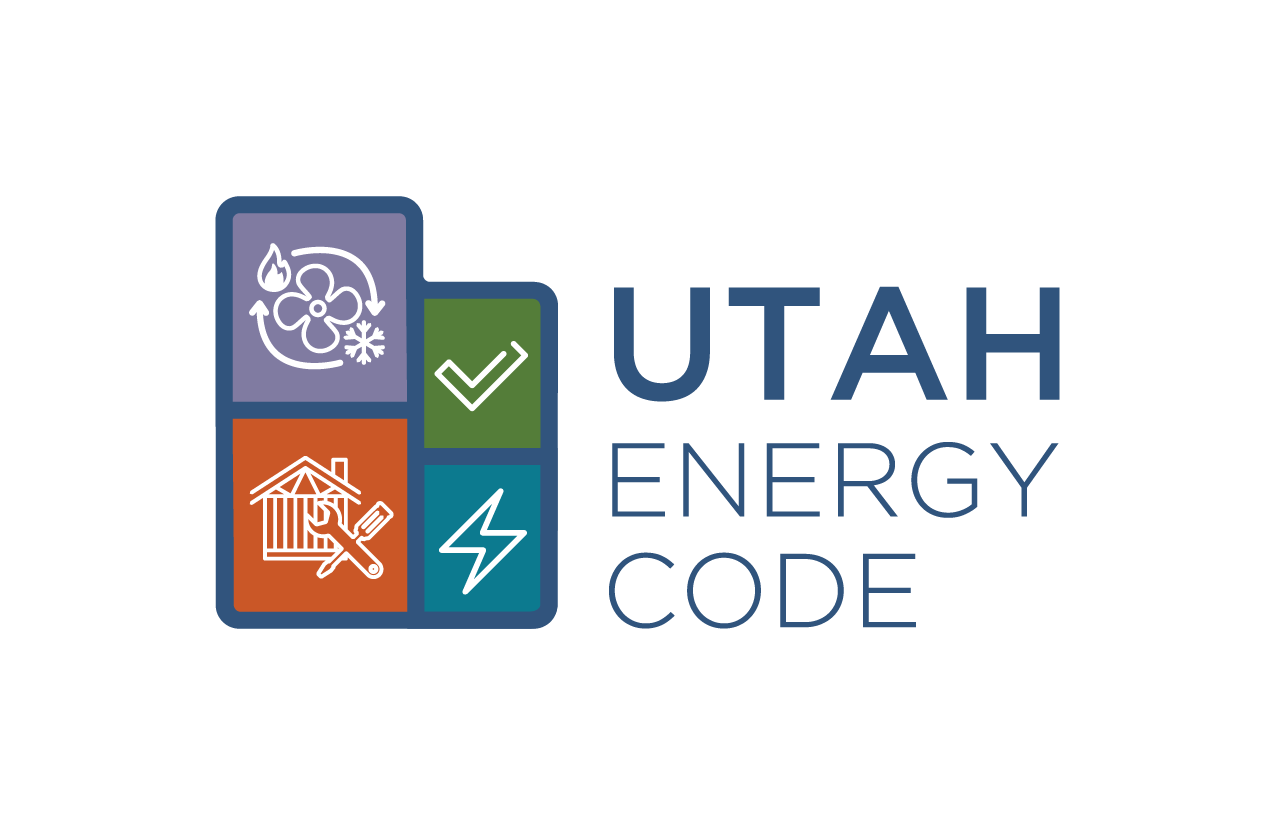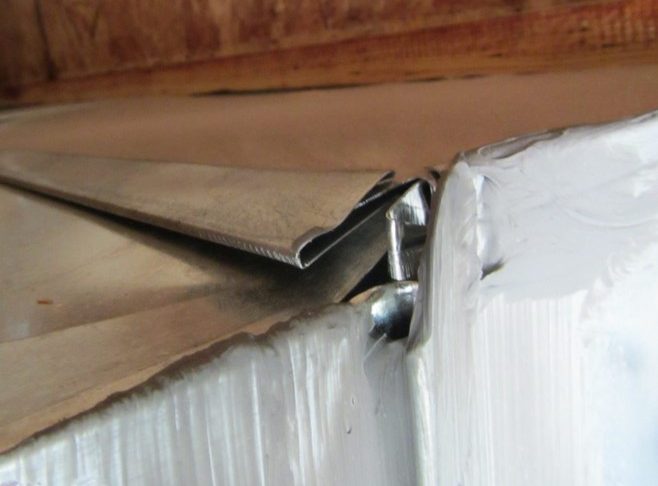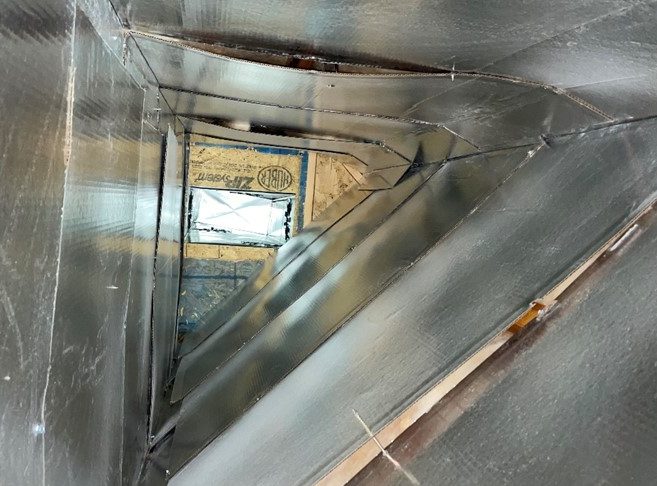
2021 IECC & IRC: Duct Sealing
True or False: Duct sealing is not important when the duct is inside the thermal envelope, as there is no leakage to outside.
Hopefully your response is False. Over the past several years, Mitch Richardson with Building Science West have tested duct systems in at least six problem homes where the duct system leakage rate was excessive to the point that they could not attain the 25-pascal test pressure. In most cases, the system was moving design airflow through the air handler/furnace; however, the design airflow was not measured at the supply outlets or return inlets. The comfort level in the homes was unacceptable, often varying 8-10 degrees throughout the home, simply because the heated or cooled air was not reaching the areas it was needed.
The attached are photos from two of those homes. The leakage in the triangle panned return chase, installed to pull return from several inlets located at the main floor ceiling, resulted in an airflow at the ceiling return grills of 5% of the design CFM*. Heat was not drawn from the ceiling creating a whole house temperature imbalance. In the other photo, the installer applied sealer only where he expected the inspector would see it.
IRC M1601.1 Duct design. Duct systems serving heating, cooling and ventilation equipment shall be installed in accordance with the provisions of this section and ACCA* Manual D, the appliance manufacturer’s installation instructions or other approved methods.
IRC M1601.4.1 Joints, seams and connections. Longitudinal and transverse joints, seams and connections in metallic and nonmetallic ducts shall be constructed as specified in SMACNA* HVAC* Duct Construction Standards—Metal and Flexible and NAIMA^ Fibrous Glass Duct Construction Standards. Joints, longitudinal and transverse seams, and connections in ductwork shall be securely fastened and sealed with welds, gaskets, mastics (adhesives), mastic-plus-embedded-fabric systems, liquid sealants or tapes.
Please note the energy and mechanical codes have specified for several codes cycles sealing of all ducts servicing heating cooling and ventilation equipment, which includes supply, return, exhaust, combustion, and make-up air; any air we move into, out off, or within a building.
IRC N1103.3.4 (R403.3.4) Sealing (energy). Ducts, air handlers and filter boxes shall be sealed. Joints and seams shall comply with Section M1601.4.1.
N1103.3.4.1 (R403.3.4.1) Sealed air handler. Air handlers shall have a manufacturer’s designation for an air leakage of not greater than 2 percent of the design airflow rate when tested in accordance with ASHRAE* 193.
The energy portion of the 2021 residential code (IRC and IECC)* further requires leakage testing of all duct systems inside or outside the thermal envelope; however, a new State amendment effective July 1, 2024, requires leakage testing only when the furnace/air handler, or any portion of the duct system is located outside the thermal envelope. You may recall, prior to July 1, 2024, Utah’s residential energy code was an amended version of the 2015 IECC/IRC* Chapter 11, where leakage testing was required only if at least 20% of the duct was located outside the thermal envelope. Watch for additional discussion on this in the future.
How often is the basement cold in the summertime, due to excessive supply leakage into the basement, where the cooling load is minimal? Comfort will improve if the cooled air is delivered to the areas it is needed.
We wish to extend a thank you for your support in the past years, as we continue to provide building science/energy code training and other resources supporting building energy efficiency. Please continue to share your thoughts and ask questions, as we use each in the development of class curriculum and other resources.
-
-
- *CFM – Cubic feet per minute
- *ACCA – Air Conditioning Contractors of America
- *SMACNA HVAC – Sheet Metal and Air Conditioning Contractors National Association
- *HVAC – Heating, Ventilating and Air Conditioning
- *NAIMA – North American Insulation Manufacturers Association
- *ASHRAE – American Society of Heating, Refrigerating and Air-Conditioning Engineers
- *IRC & IECC– International Residential Code & International Energy Conservation Code
-
– Dr. Energy



0 Comments